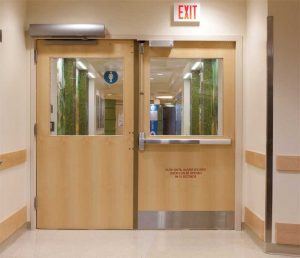
By Michael Tierney and Karen Bishop
There are multitudes of standards for builders’ hardware that, not only provide precise definitions for hardware terminology, but also establish and describe rigorous testing methods to evaluate their performance.
The American National Standards Institute (ANSI) and the Builders Hardware Manufacturers Association (BHMA) set forth standards that are used by specifiers, architects, and other key players in the construction world. These standards apply to a diverse array of hardware and are updated every five years as required by ANSI. By adhering to these standards and requirements within, construction projects can confidently specify hardware products which meet the necessary criteria of both quality and functionality.
In their usual process, BHMA members participated in a series of subcommittee meetings throughout 2021 and 2022, followed by steps to final approval set by ANSI, and published the updated standards in late 2022. The locks and applications in these updated standards are primarily used for heavy duty purposes in commercial buildings such as schools, office buildings, hospitals, and more. This article provides a brief overview of the changes made to the four standards below and more:
- ANSI/BHMA A156.2, Bored and Preassembled Locks and Latches
- ANSI/BHMA A156.12, Interconnected Locks
- ANSI/BHMA A156.13, Mortise Locks and Latches
- ANSI/BHMA A156.24, Delayed Egress Locking Systems
ANSI/BHMA A156.2, Bored and Preassembled Locks and Latches
A156.2-2022 establishes requirements for bored and preassembled locks and latches, and includes cycle, strength, operational, and material evaluation tests, and dimensional criteria. Although these standards are 40- to 50-years-old and considered “mature,” BHMA opens and revises them for many reasons, including keeping up with technology advances, changes to building codes, marketplace demands, and the implementation of new innovations.




